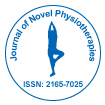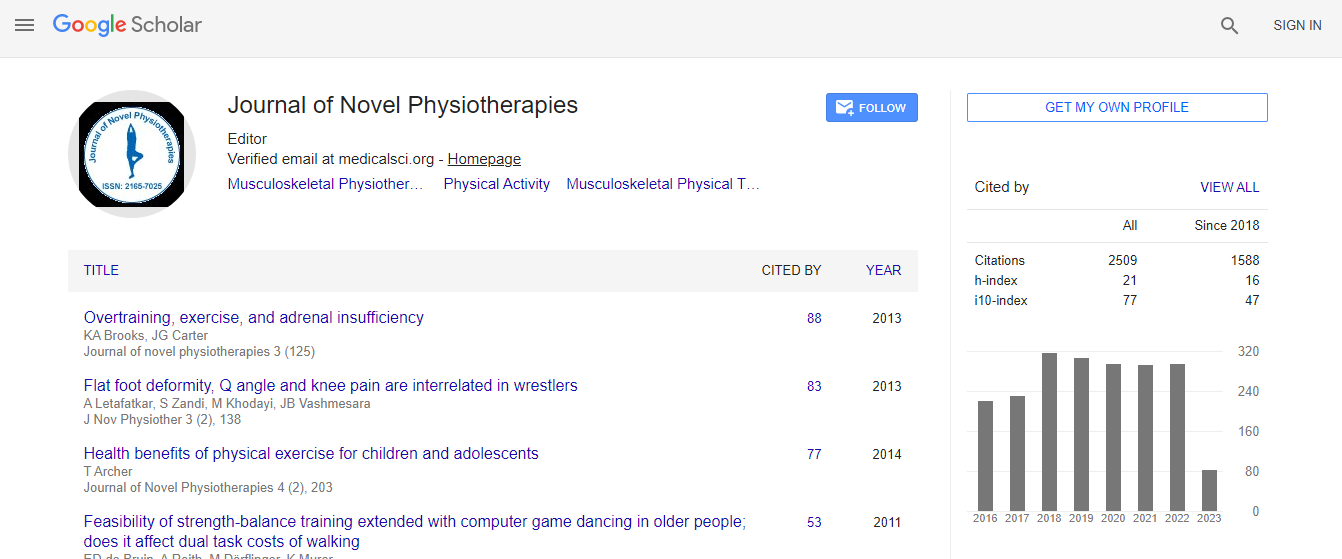Our Group organises 3000+ Global Events every year across USA, Europe & Asia with support from 1000 more scientific Societies and Publishes 700+ ������ Journals which contains over 50000 eminent personalities, reputed scientists as editorial board members.
������ Journals gaining more Readers and Citations
700 Journals and 15,000,000 Readers Each Journal is getting 25,000+ Readers
Citations : 3145
Indexed In
- Index Copernicus
- Google Scholar
- Open J Gate
- Genamics JournalSeek
- Academic Keys
- SafetyLit
- RefSeek
- Hamdard University
- EBSCO A-Z
- OCLC- WorldCat
- Publons
- ICMJE
Useful Links
Recommended Journals
Related Subjects
Share This Page
Screening of urinary incontinence in female athletes: An observational study
International Conference and Expo on Novel Physiotherapies
Arati V Mahishale
KLE University, India
Posters-Accepted Abstracts: J Nov Physiother
DOI:
Abstract
Background: Urinary Incontinence (UI) is a socially embarrassing condition which decreases the quality of life. Stress urinary incontinence has shown to lead to withdrawal from participation in high-impact activities. It may be considered a barrier for lifelong athletics participation in women. Objective: The purpose of this study is to find out the incidence of urinary incontinence in female athletes and assess a possible correlation between the type, duration, and intensity of sport to that of urinary incontinence. Methods: A total sample size of 300 female athletes/sportswomen participating in various sports at recreational, competitive and elite levels selected from various universities and sports centers with age ranging from 18-30 years were screened for UI. Outcome Measures: The data was analyzed in terms of Questionnaire for Urinary Incontinence Diagnosis (QUID), Revised Urinary Incontinence Scale (RUIS) for screening UI in female athletes, and King��?s Health Questionnaire (KHQ) for quality of life. Results: Overall, 16 female athletes reported (5.33%) of urine loss while participating in their sport/training. Track and field events had highest incidence of 9.38 %. Highest incidence was seen in elite 11.76% and competitive athletes 8.70%. QUID, RUIS and KHQ scores were correlated and showed statistically significant with p value of p=0.0001, respectively. Conclusion: UI in young nulliparous female athletes is 5.33% when screened in common Indian based sports.Biography
Email: mphysioarati@gmail.com

